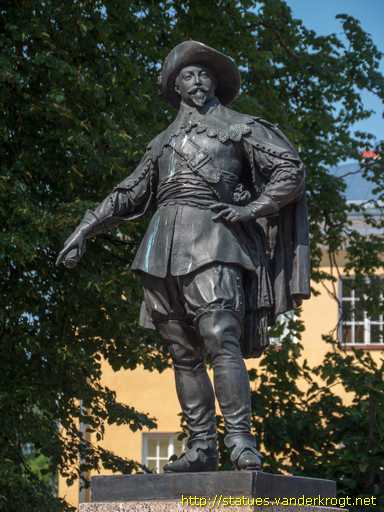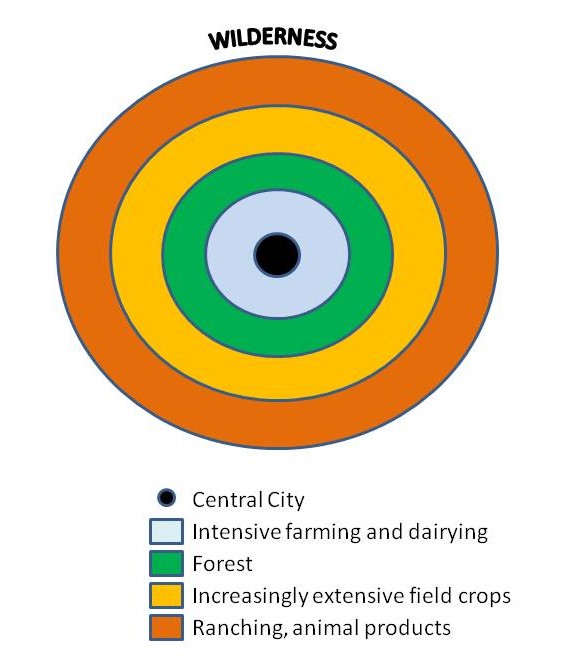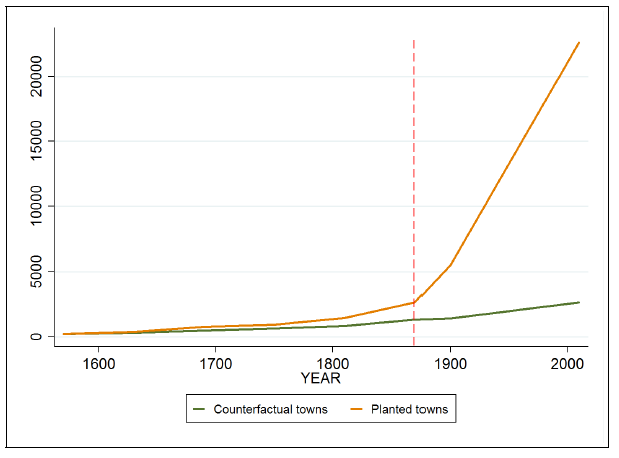Blog
Seminar paper: Planted towns
Seminar paper Kerstin Enflo and Alexandra López-Cermeno (Lund University), presented on the 2nd of November in our Autumnal seminar series.

Astana, made capital of Kazakhstan in 1998. Image from https://gvalife.wordpress.com/2012/07/03/before-after/
The modern imagination can conjure a number of examples of towns and cities established where formally there were none (or very small outposts). Huge cities appearing where very little had stood before; Brasilia springs to mind, as does Canberra. For me Astana, in Kazakhstan, is the first one I think of as my parents lived there, after first having lived for two years in Almaty. Astana is an extreme example of a city founded in an inhospitable location for political reasons. If you want to get a sense of how inhospitable my parents were warned before moving that walking from the front door to a waiting car without sufficient facial covering could result in the freezing solid of your sinus (apparently excruciating). This recent newspaper article gives another take on how inhospitable Astana can be, and the efforts being made to overcome these challenges. These examples are all capital cities established in the last 50 years but the phenomenon of planting towns in new areas to achieve varying goals has a long historical precedent. Madrid, although a settlement since at least the 9th century, only started it’s development as a town with the decision by Philip II to move his court there. Again, however, this is a success story. Many planted towns were not so successful and remained remote outposts, or failed to flourish. Using a dataset on one country’s planted towns Kerstin Enflo and Alexandra López-Cermeno trace the development of such planted towns relative to their organically established medieval cousins.

King Gustav II Adolph of Sweden by: http://statues.vanderkrogt.net
In their paper Enflo and López-Cermeno use Swedish data from 1570-1810 to explore how the establishment of new towns (planted towns) affected nearby parishes, in contrast to parishes unaffected by these planted towns. The data they have allows for a sort of Natural Experiment (see Natural Experiments of History by Diamond and Robinson for more on this) whereby they can see whether a policy intervention has long-term, sustainable outcomes. In her presentation Enflor made use of the image of the statue on the right, Gustav II Adolph of Sweden and explained that town-planting went rather as depicted here, Gustav pointed at the ground somewhere and said “Here there shall be a town!”. This was forced upon the local-residents whether they liked it or not. They find that most of the planted towns were established in sub-optimal locations in terms of how much agricultural production could be expected from the surrounding countryside. The framing of the paper initially is in terms of Jane Jacobs versus Gordon Childe – Childe, who coined the term the Neolithic Revolution, argued that towns could only be established when agricultural surpluses existed whereas Jacobs argued that towns and cities

von Thunen’s model https://www.albert.io/blog/von-thunen-model-ap-human-geography-crash-course/
could stimulate productivity through innovation and thus themselves led to the invention of agriculture. Another model they draw inspiration from is the von Thunen idea of concentric circles of production based upon how efficient it was to produce certain goods a given distance from a central market. So cereals, which could be transported long-distances without spoiling could be grown at great distance while fruit and vegetables needed to be grown closer to home. However the rest of the paper moves on to work more through a Smithian growth perspective – could these towns sustain themselves and grow extensively and intensively? The answer is extensively maybe yes, intensively no. So no boost to productivity is found, although the planted towns do slowly gain greater population.
However they show that all these planted-towns persisted through to the current day, and indeed that their industrial take-off was superior to that of the counter-factual control town group they built. This, they conclude, may have had to do with the sunk-costs made in infrastructure in these towns which act as a sort of signalling mechanism to investors that this is a privileged place. The existence of roads, Town Halls and Court Houses helps coordinate investments when the country is poised for industrial take-off. This can be clearly observed in the graph below, presented on page 18 of their paper.

Growth of planted towns versus counterfactuals from Enflo and López-Cermeno
The discussion that followed the paper was interesting, and one, that having just taught a course on using models when doing historical research I wished my masters students could have attended. In that course we discuss Malthusian, Smithian, Marxist and Institutional models and in his question to Enflo, Bas van Bavel nicely summed up each in asking why she chose to focus so heavily on the Smithian approach. The theoretical framework on the governance of town-country relations were a recurrent topic, at which point it emerged that Swedish residents of these towns had frequently petitioned the king to be allowed to move elsewhere. The rest of the debate continued at a lively pace with plenty of food for thought for us, and hopefully also for the authors.
Featured Image for this blog post (the one that appears on the main blog page) is of Karlskrona, one of the planted towns
For more on Astana see:
https://www.theguardian.com/cities/2017/oct/18/astana-plan-warm-winter-ring-one-million-trees
https://www.theguardian.com/cities/2015/jul/28/astana-kazakhstan-strangest-capital-cities-on-earth


Leave a Reply